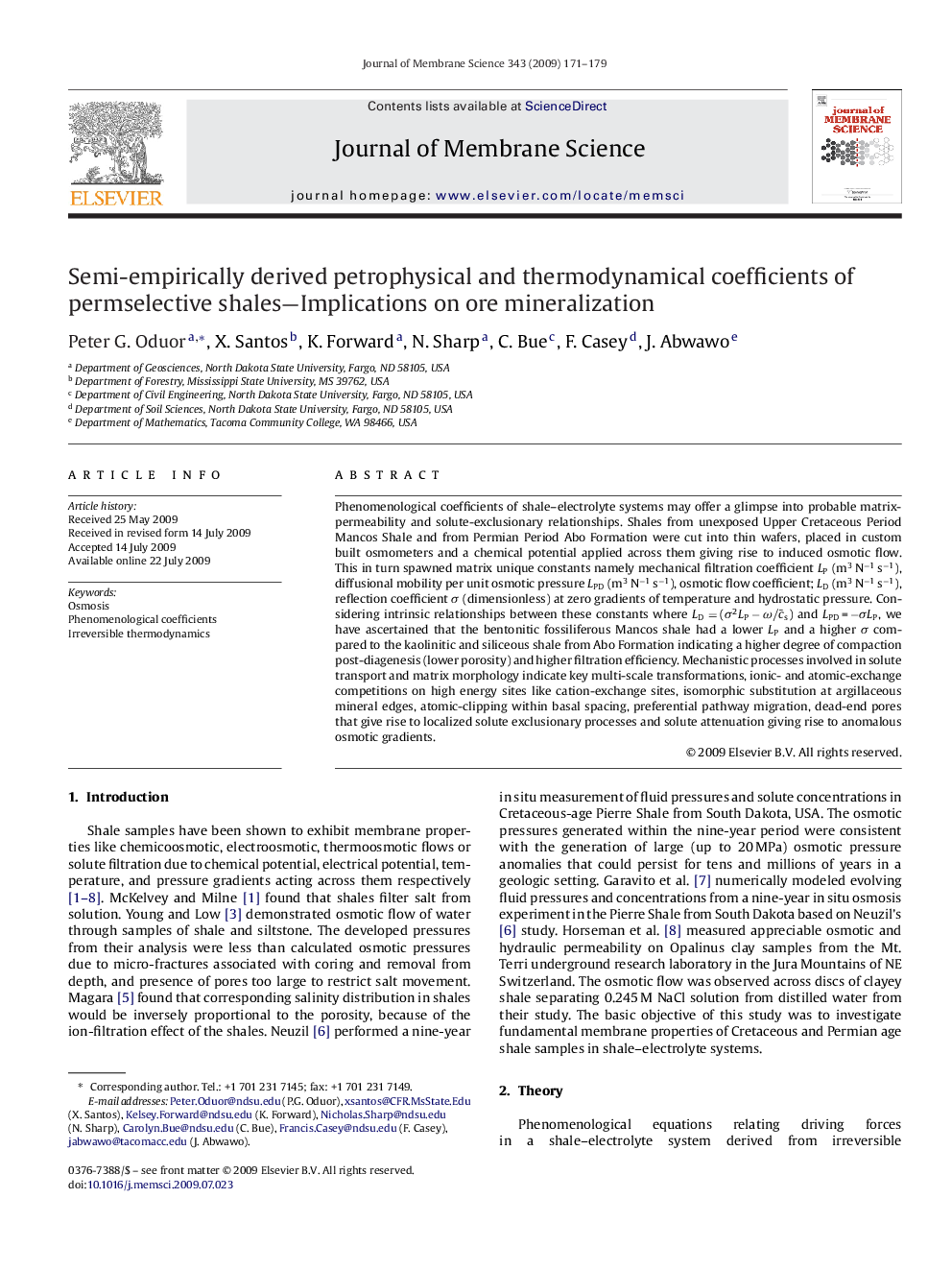| Article ID | Journal | Published Year | Pages | File Type |
|---|---|---|---|---|
| 636710 | Journal of Membrane Science | 2009 | 9 Pages |
Abstract
Phenomenological coefficients of shale-electrolyte systems may offer a glimpse into probable matrix-permeability and solute-exclusionary relationships. Shales from unexposed Upper Cretaceous Period Mancos Shale and from Permian Period Abo Formation were cut into thin wafers, placed in custom built osmometers and a chemical potential applied across them giving rise to induced osmotic flow. This in turn spawned matrix unique constants namely mechanical filtration coefficient LP (m3 Nâ1 sâ1), diffusional mobility per unit osmotic pressure LPD (m3 Nâ1 sâ1), osmotic flow coefficient; LD (m3 Nâ1 sâ1), reflection coefficient Ï (dimensionless) at zero gradients of temperature and hydrostatic pressure. Considering intrinsic relationships between these constants where LD=(Ï2LPâÏ/c¯s) and LPD = âÏLP, we have ascertained that the bentonitic fossiliferous Mancos shale had a lower LP and a higher Ï compared to the kaolinitic and siliceous shale from Abo Formation indicating a higher degree of compaction post-diagenesis (lower porosity) and higher filtration efficiency. Mechanistic processes involved in solute transport and matrix morphology indicate key multi-scale transformations, ionic- and atomic-exchange competitions on high energy sites like cation-exchange sites, isomorphic substitution at argillaceous mineral edges, atomic-clipping within basal spacing, preferential pathway migration, dead-end pores that give rise to localized solute exclusionary processes and solute attenuation giving rise to anomalous osmotic gradients.
Related Topics
Physical Sciences and Engineering
Chemical Engineering
Filtration and Separation
Authors
Peter G. Oduor, X. Santos, K. Forward, N. Sharp, C. Bue, F. Casey, J. Abwawo,
